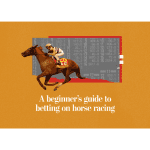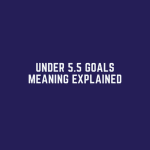Understanding Fractional Odds
Fractional odds are commonly used in the United Kingdom and represent the ratio of profit to the stake. For example, if the odds are 2/1, for every $1 bet, you would win $2 in profit plus your initial $1 back, for a total of $3. This means that you would make a $2 profit for every $1 wagered if the bet won.
Another aspect to keep in mind with fractional odds is that the left side of the fraction represents the potential profit, while the right side represents the amount you need to wager. So, if the odds are 5/1, you stand to gain $5 for every $1 bet. On the other hand, if the odds are 1/4, you would need to wager $4 to make a $1 profit. Understanding how to interpret these odds is crucial for making informed betting decisions.
Understanding Decimal Odds
Decimal odds represent the potential return from a bet, rather than just the profit. It is crucial to comprehend that the decimal number includes the original stake, unlike fractional odds. For instance, if you place a bet at 2.50 decimal odds, you would get back $2.50 for every dollar wagered. This amount includes both your initial stake and the profit.
In decimal odds, the lower the number, the higher the likelihood of the outcome occurring. For instance, odds of 1.50 imply a higher probability compared to odds of 3.00. Understanding how to interpret decimal odds is fundamental when navigating the world of sports betting, as it plays a vital role in calculating potential winnings and assessing the probability of a particular outcome.
Understanding Moneyline Odds
Understanding Moneyline Odds is a straightforward way of representing odds in sports betting. In this system, positive and negative numbers are used to indicate the favorite and underdog in a particular match. Positive numbers signify the underdog, while negative numbers represent the favorite. For example, a moneyline of +200 would mean that a $100 bet on the underdog would yield a $200 profit if successful.
Conversely, a negative moneyline, such as -150, demonstrates that a $150 bet is required to win $100 on the favorite. Moneyline odds are commonly used in the United States and are a prevalent form of odds representation in sports betting. They provide a clear indication of which team or athlete is expected to win and the potential payout associated with placing a wager on them.
Identifying the Favorite in Odds
In sports betting, identifying the favorite in odds is crucial for making informed decisions when placing bets. The favorite is the team or player that is expected to win the event, often indicated by having the lowest odds. These lower odds suggest that the outcome is more likely to happen according to the bookmakers, resulting in a smaller potential payout for bettors who choose to wager on the favorite.
When looking at odds, the favorite is usually represented by a minus sign (-) in front of the odds. For example, if a team has odds of -150, it means that you would need to wager $150 to win $100 in profit. Additionally, favorites are often perceived to have a higher chance of winning due to their previous performances, rankings, or other favorable factors that make them the more likely victor in the eyes of oddsmakers.
Identifying the Underdog in Odds
When looking at odds in sports betting, the underdog is the team or competitor that is less likely to win according to the bookmakers. The underdog is represented by a higher number in fractional, decimal, or moneyline odds, indicating a larger potential payout if they were to win. Identifying the underdog can be crucial for bettors looking to place wagers with higher risk but also higher reward.
In fractional odds, the underdog is denoted by a higher numerator and lower denominator compared to the favorite. For example, if a team has odds of 5/1 to win a match, they are considered the underdog as they are less likely to win according to the bookmaker. Similarly, in decimal odds, the underdog will have a higher number, such as 4.00, implying a higher payout if they are victorious. In moneyline odds, the underdog will have a plus sign before the number, like +300, indicating the potential profit on a $100 bet if they win.















